With the stock market still volatile and in a bottoming process, it’s a good time to find dividend stocks to buy on the dip. As the old saying goes, dividend stocks “pay you to wait.”
In other words, even if the market sinks, forcing the lion’s share of equities to decline, stocks with dividends limit their owners’ losses and increase the overall profits that they will generate after the market has turned around.
And given the market’s steep, largely all-encompassing selloff this year, plenty of high-quality dividend stocks have quite high yields and very low valuations.
By “high-quality dividend stocks,” I mean that these names have been reporting strong financial results and have solid businesses with powerful, long-term catalysts.
| GSK | GSK | $42.48 |
| BX | Blackstone | $94.37 |
| BBY | Best Buy | $71.94 |
| BEP | Brookfield Renewable Partners | $36.40 |
| D | Dominion | $79.26 |
| JPM | JPMorgan Chase | $114.27 |
| MCD | McDonald’s | $258.86 |
GSK (GSK)
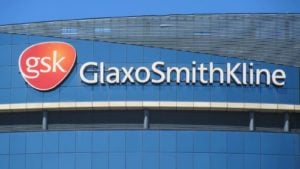
There’s a very good chance that GSK (NYSE:GSK) has a blockbuster cancer drug in the making. I hold that view because, in a recent trial involving 18 rectal cancer patients who took the company’s drug, dostarlimab, all of the patients’ cancer disappeared. Moreover, multiple cancer specialists quoted by The New York Times said they had never before seen a trial in which a drug made the tumors of every patient in the trial vanish.
And making the results even more spectacular, dostarlimab did not have any ” clinically significant complications.” In other words, none of them had any major side effects.
Keep in mind that cancer drugs do not have to cure every patient or even most patients to be very widely prescribed. For example, Merck’s (NYSE:MRK) Keytruda is a lung cancer treatment that has also been one of the world’s most lucrative drugs over the last several years.
Among patients taking Keytruda, “the average overall survival duration is … 26.3 months compared to 14.2 months for those treated with chemotherapy.” And the drug is the first-line treatment for many patients.
Dostarlimab doesn’t need to be perfect to be good enough to generate hundreds of billions of dollars of sales. Although I’m far from an expert on cancer drugs, I think there’s an excellent chance of dostarlimab meeting that criteria, based on the results of the trial reported by The Times.
Meanwhile, the 5.9% dividend yield of GSK stock pays investors to wait for the drug to prove its value.
Blackstone (BX)
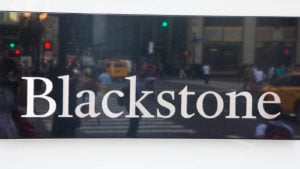
“Known for its private equity and real estate investments,” Blackstone (NYSE:BX) “has a very impressive track record, business model, and forward outlook,” wrote Seeking Alpha columnist Samuel Smith in his July 9 column.
Indeed, the company’s net income last year came in at a very impressive $5.86 billion, up from $1.05 billion in 2020 and $2.05 billion in 2019. And its revenue soared to $22.2 billion last year, versus $6.2 billion in 2020 and $7.1 billion in 2019.
Moreover, analysts, on average, expect its earnings per share to jump to $5.40 this year, versus $4.77 last year. For 2023, the mean EPS estimate is $5.96.
With real estate and small, private company valuations likely to drop significantly over the next year, long-term investors who buy BX stock will benefit from the bargains that the company is going to get from now until mid-2023.
BX stock has a dividend yield of 4.7% and a very reasonable forward price-to-earnings ratio of 18.
Best Buy (BBY)
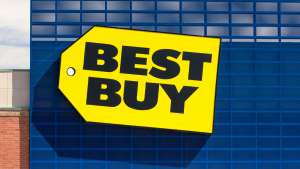
Given consumers’ preference for experiences over products, along with the reportedly weak demand for PCs and smartphones, recommending Best Buy (NYSE:BBY) stock seems counterintuitive.
But the experiences-to-goods spending ratio will eventually go back to normal. As a result, long-term investors should consider buying a few names with attractive valuations that will benefit from the return to normality.
Moreover, trading at a forward price-to-earnings ratio of just 8.9, BBY stock is extremely cheap. Also importantly, Best Buy is the only well-known, large retail chain of its kind in the U.S. that’s devoted entirely to consumer electronics across all brands.
Similarly, the company is the rare large retail chain with a reputation for employing many workers who are knowledgeable about a very wide range of consumer electronics products. Those distinctions give Best Buy something like monopoly status in the consumer electronics sector.
Add in the stock’s dividend yield of 4.6%, and BBY stock become quite attractive for long-term investors.
Brookfield Renewable Partners (BEP)
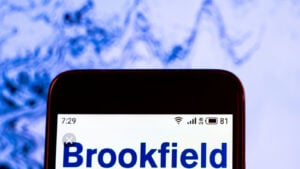
Brookfield Renewable Partners (NYSE:BEP), which is not very well-known outside of some Wall Street and energy-sector circles, owns “hydroelectric, wind, solar and storage facilities in North America, South America, Europe and Asia.”
The firm’s renewable energy portfolio has a huge generating capacity of roughly 21,000 megawatts. Its renewable assets under management are valued at $68 billion.
At a time when governments and the private sector are pouring tremendous amounts of money into renewable energy, electricity prices are jumping, and the rapidly growing electric-vehicle fleet around the world is going to require more and more electricity each year, it’s a very good time to be an owner of renewable-energy assets.
Brookfield generated a hefty $2.5 billion of EBITDA (earnings before interest, taxation, depreciation and amortization) last year, up from $2.3 billion in 2020, while its top line climbed to $4.1 billion from $3.8 billion.
BEP stock has an attractive enterprise value-to-EBITDA ratio of of 12.1 and a fairly high dividend yield of 3.5%.
Dominion (D)

Like Brookfield, Dominion (NYSE:D) is poised to get a big boost from the renewable-energy revolution.
Writing about the company, Seeking Alpha columnist noted that “between 2021 and 2025, it expects to spend $17 billion on zero-carbon electricity generation and energy storage, including plans to develop a 2.6 gigawatt offshore wind farm off the coast of Virginia, the largest commercial offshore wind development in the United States.”
Dominion anticipates increasing its EPS by an annual average of 6.5% “through at least 2026.” It expects shareholder returns to come in at roughly 10% annually.
Also worth noting is that Dominion enjoys hedges against inflation because it’s allowed to increase its electricity prices annually based on “cost and interest rates.” And the company says that its offshore wind projects are “largely derisked from inflationary impacts at this point,” as most of the costs in the projects are fixed.
Over the longer term, utilities like Dominion are well-positioned to benefit a great deal from the proliferation of EVs, and D stock has a meaningful dividend yield of 3.4%.
JPMorgan Chase (JPM)
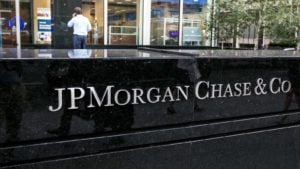
JPMorgan Chase (NYSE:JPM) stock dropped slightly, falling to a 52-week low, on the day that the company recently reported its Q2 earnings. However, there was actually a great deal of positive aspects of the company’s results and comments.
For instance, the bank’s Q2 EPS came in at $2.76, higher than Q1’s $2.63, while its “provision for credit losses” slid to $1.1 billion last quarter from $1.5 billion in Q1.
Additionally, the net income of JPMorgan’s Consumer & Community Banking and Commercial Banking units rose meaningfully, while its total loans increased versus Q1.
Of course, as has always been the case in recent months, CEO Jamie Dimon’s bearish comments received a great deal of media coverage. But he also had many positive things to say. Most notably, he reported that “Consumers are in good shape. They’re spending money. They have more income. Jobs are plentiful. They’re spending 10% more than last year, almost 30% plus more than pre-COVID. Businesses, you talk to them, they’re in good shape. They’re doing fine.”
And Dimon said “we’ll do it quite well” if a recession does materialize.
JPM stock is trading for just 1.3 times its book value and has a forward price-earnings ratio of only 10.2. The shares also now have a significant dividend yield of 3.5%.
McDonald’s (MCD)

Amid signs that restaurants’ cost increases may be peaking while the economy is slowing, McDonald’s (NYSE:MCD) stock looks like a good pick.
Many consumers may trade down to McDonald’s as their savings decline and their costs increase. Indeed, on June 29, Atlantic Equities raised its rating on MCD stock to “overweight” from “neutral,” citing McDonald’s defensive nature and its role as “a leader in the global quick-service restaurant space.” The firm placed a $278 price target on the shares.
Als0 upbeat on McDonald’s last month was another research firm, BTIG. Its checks suggested that the chain’s “same-store sales improved sequentially through the second quarter … as consumers gravitate toward familiar and trusted brands.”
In 2022, analysts, on average, expect the company’s EPS to hit $9.84. MCD stock has a 2.2% dividend yield.
On the date of publication, Larry Ramer did not have (either directly or indirectly) any positions in the securities mentioned in this article.
